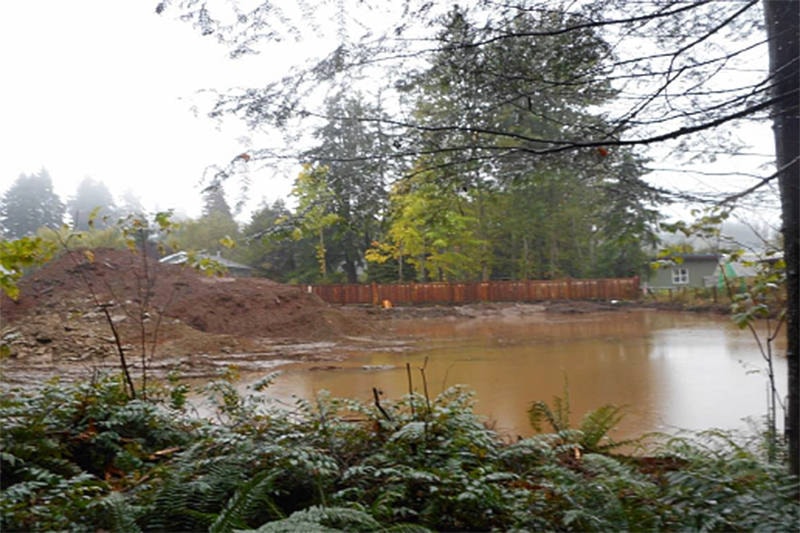The BC Great Blue Heron Society (BCGHS) and some Twillingate Road-area residents want the City of Campbell River to take action to protect a heron rookery within city limits.
“We’ve lived here since 2001 and the herons have always been around,” said Twillingate Road resident Adele Hollingsworth. “They like to rest in the tall trees in our yard. We’re about a block up from the ocean. Quite often we’ll look out in the backyard and there’s one or two herons sitting in our trees waiting for tide, waiting for the wind to die down and we just enjoy hearing their squawks. We just enjoy that they’re here.”
Herons have been nesting in the Twillingate neighbourhood in the south end of Campbell River for years and use trees for roosting and waiting for tide changes, a BCGBHS submission to city council says. If the herons nest on Twillingate Road this year, nesting success may depend on whether construction at the lot next door disturbs the parents and results in abandonment of the site. There were as many as three chicks last year, BCGBHS says.
The BCGBHS were to speak as a delegation to city council on Monday.
The area has been rezoned for intensive development but it appears that there was no provision made for the herons or other wildlife in this process, including restrictions on construction during sensitive nesting periods, BCGBHS chair Gillian Anderson says in her submission to council.
“We urge the city to act immediately to ensure the best possible chance that this heron pair will nest successfully,” Anderson says.
The historic presence of herons, a species listed both federally and provincially for conservation concerns, should require a more ecologically-sensitive plan for this area, particularly given its proximity to Willow Creek Nature Park, with its wide variety of wildlife, including three salmon and two trout species, BCGBHS says.
“Tree retention requirements and wildlife corridors should be initiated before any more development applications go through,” Anderson’s submission says.
The BCGBHS says the nests and nest trees of herons are protected year-round, whether or not the nest is currently active. As well as herons, many of the other birds who nest in Campbell River are migratory, and it is a federal offence under the Migratory Birds Convention Act to harm these birds or their eggs or nests: as some birds raise more than one brood, their sensitive nesting periods occur inclusively between the months of March to August.
“We urge council to re-examine other areas within the urban containment boundary with a view to a more wildlife-friendly densification process,” Anderson says in the BCGBHS submission. “As well as the joy that birds bring to our lives, they also provide significant insect and rodent control, and bird-watching activities, including migration festivals, sanctuary visits, equipment purchases, etc., are worth billions of dollars and hundreds of thousands of jobs world-wide. The city must strive with innovative planning tools to conserve habitat wherever it occurs, because cities that are healthy places for wildlife are healthy places for people. Your actions now will safeguard the natural environment of the city for future generations.”
